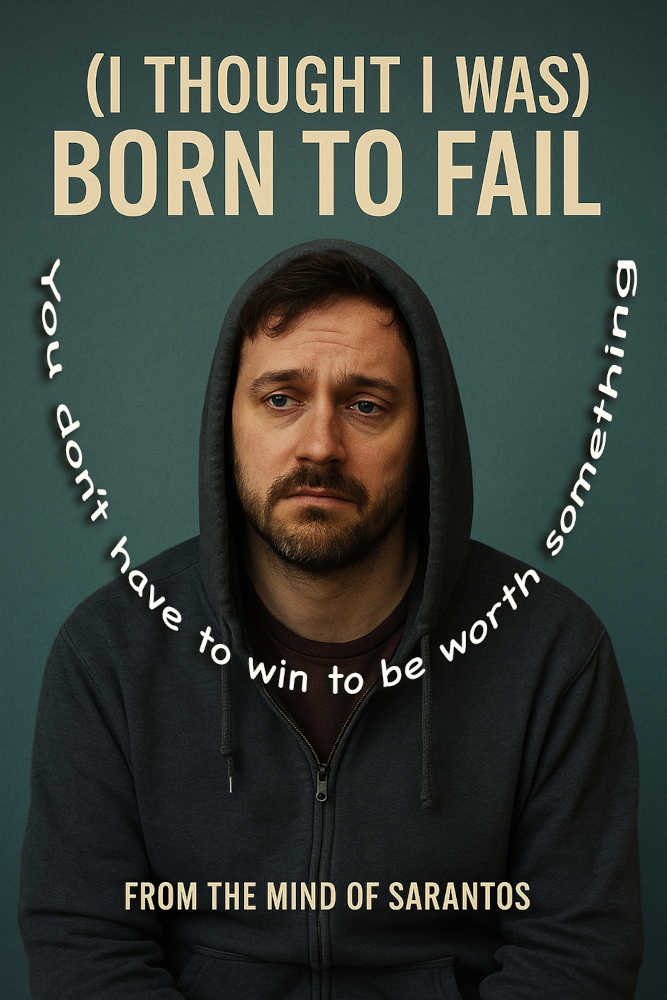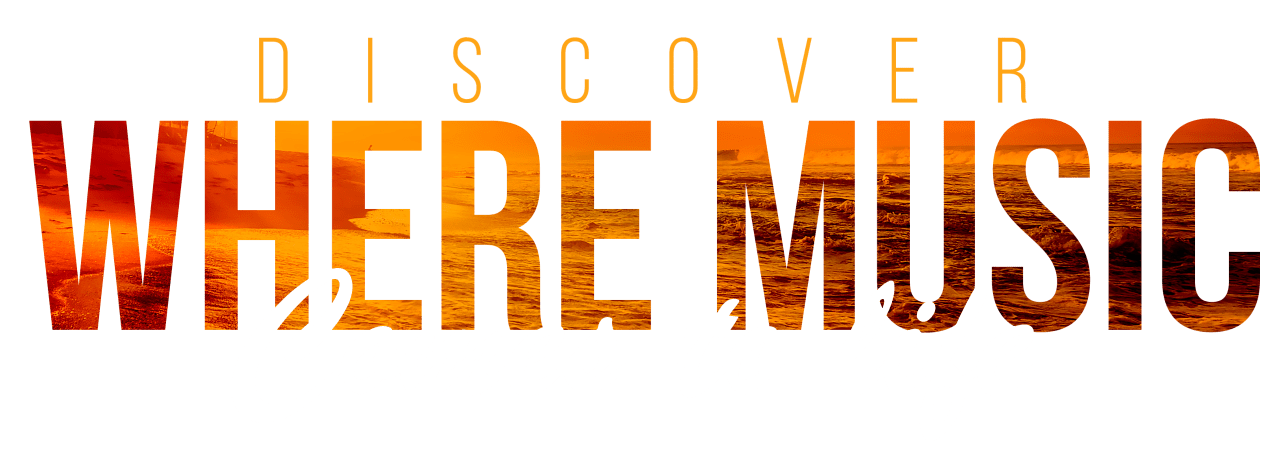
Sarantos Screenplay: Born to Fail

Logline:
When a disillusioned filmmaker on the verge of giving up accidentally makes a short film that resonates with strangers, he’s pushed into a quiet journey of rebuilding purpose — learning, through failure, that meaning isn’t found in success, but in showing up honestly.
Genre
Drama
Subgenres:
- Character-Driven Drama / Slice of Life
- Creative Journey / Artist’s Redemption
- Subtle Romance / Emotional Intimacy
- Coming-of-Self (Adult Identity, Not Adolescence)
Why This Fits:
- Tone: Quietly emotional, introspective, and cinematic—more concerned with internal change than plot twists. Humor arises naturally through character behavior, not punchlines.
- Structure: Classic three-act personal arc—disillusionment, rediscovery, and renewal. The tension comes from self-sabotage and vulnerability rather than external antagonists.
- Characters: Creatives navigating failure, friendship, and the meaning of “success.” The romantic undercurrent between Aris and Lila isn’t central but deepens the emotional texture.
In Studio Terms:
If you pitched it to studios or streaming platforms, you would call it:
“A grounded, emotionally honest character drama about failure, art, and persistence.”
Or simply:
“A reflective indie drama in the vein of Inside Llewyn Davis meets The Worst Person in the World.”
Synopsis
Aris is a struggling filmmaker stuck between dead-end jobs, unfinished scripts, and the quiet shame of almost making something real. His best friend Jake hides sincerity under constant jokes, and Lila—an artist rebuilding her own courage—calls him out on every excuse. The three drift through a restless city that mirrors their creative burnout, where coffee shops double as confessionals and the fear of mediocrity hangs over every conversation.
When Aris impulsively films a raw one-take short called Still Standing and screens it at a tiny local festival, the response surprises him. A stranger’s message—“Your film helped me say something I couldn’t”—cracks open the numbness he’s been living in. Lila pushes him to keep going, not to prove anything, but to be honest.
As Aris begins making work again, he wins a small lottery prize but refuses to use it for comfort. Instead, he funds another short, a messy collaboration with Jake and Lila that slowly becomes a mirror of his own fear and resilience. Their makeshift production—broom-handle booms, string lights, and sincerity—unfolds like therapy in motion.
Invited to screen at the modest Riverlight Festival, Aris confronts his deepest dread: being seen. What follows isn’t triumph but recognition. The applause is quiet, human, and exactly enough. When Lila earns an art residency and their paths diverge, both acknowledge the feelings they’d been avoiding—and the importance of continuing, separately but inspired.
In the aftermath, Aris begins teaching a small writing workshop at the public library, guiding others to find honesty in their own voices. A note from one student reads: “I almost quit. Then I remembered you said failing means you showed up.”
By the end, Aris isn’t chasing validation—he’s learning presence. Sitting at his cluttered desk, he writes two words across a clean page: FADE IN. His story, and his life, are just beginning again.
Comps
Comp #1 (Two Films):
It’s Inside Llewyn Davis meets The Worst Person in the World.
A grounded, emotionally raw character drama about creative paralysis and self-worth — mixing the quiet melancholy of artistic struggle with the bittersweet humor of rediscovering purpose through connection.
Comp #2 (Film + Genre Element):
It’s Frances Ha with the emotional resonance of Good Will Hunting.
An intimate, modern story about failure, friendship, and finding meaning through honesty — where art becomes both confession and redemption.
Comp #3 (Streaming-Friendly Framing):
It’s A24-style indie introspection reimagined for Netflix or Amazon Prime’s prestige drama slate.
A heartfelt, visually minimalist exploration of creativity, loneliness, and quiet persistence — ideal for audiences drawn to reflective, dialogue-rich stories like Aftersun and Past Lives.
Elevator Pitch:
He’s the kind of artist who jokes about failing before anyone else can say it. She’s the friend who calls his bluff — and quietly needs the same courage she demands from him.
In this heartfelt, character-driven drama, a disillusioned filmmaker accidentally creates a raw short film that connects with strangers and forces him to confront the one thing he’s been avoiding: being seen. With the help of Lila, a fellow creative rediscovering her own voice, Aris learns that meaning doesn’t come from success — it comes from showing up, even when it hurts.
Think Inside Llewyn Davis meets Frances Ha, with the emotional intimacy of Past Lives and the quiet resilience of Short Term 12.
Character Conflict:
Character Conflict Summary:
Aris vs. Himself (and the fear of insignificance)
Lila vs. Avoidance (her instinct to help everyone but herself)
Aris’s Core Conflict:
He’s a filmmaker who has built an identity around almost succeeding — using self-deprecation as armor. Aris equates failure with proof that he’s broken, not realizing that creation and collapse are inseparable.
- Wound: Years of creative rejection and emotional invisibility — once mentored by Raymond, who taught him to write honestly, then left him without direction.
- Flaw: Uses irony and detachment to protect himself from disappointment. He hides behind “almost,” because finishing means risking exposure.
- Fear: That he’ll be seen for who he really is — earnest, hopeful, and possibly not good enough.
Lila’s Core Conflict:
She’s an illustrator whose confidence eroded after professional rejection. Lila masks her fear of irrelevance with sarcasm and supportiveness; she’s the person who fixes others’ self-doubt so she doesn’t have to face her own.
- Wound: A failed art show that ended her momentum and convinced her that sincerity doesn’t sell.
- Flaw: Uses humor and caretaking to avoid vulnerability; she’ll nurture everyone else’s art but neglect her own.
- Fear: That she’ll never be brave enough to make something that actually matters to her.
Where They Collide:
Their connection grows through shared failure — but while Lila pushes Aris to finish something honest, Aris forces her to confront why she stopped creating at all. Each sees in the other what they’re afraid to face alone.
- Aris sees in Lila the courage to show up even when afraid.
- Lila sees in Aris the honesty she lost chasing perfection.
Their intimacy threatens their defenses — her caretaker instinct meets his avoidance, and both are tested by the vulnerability of being understood.
Central Emotional Conflict:
Can two people who’ve built their lives around artistic self-protection risk being seen — by others, and by each other — without mistaking honesty for failure?
Bonus Conflict Dynamics:
- Both wrestle with creative paralysis, but express it differently: Aris through irony, Lila through deflection.
- They mirror each other’s fears — his of finishing, hers of starting.
- Jake serves as their chaotic mirror: someone who fails loudly and keeps going anyway.
- The external world (the festival, the workshop, the lottery win) forces them to test if their values hold up outside of private safety.
Why This Conflict Is Strong:
- It’s intimate and universal — fear of failure and fear of being seen are the twin pressures of every artist’s life.
- It’s emotional and behavioral — every choice (submit the film, start teaching, confess feelings) carries risk of rejection.
- It’s thematic and cinematic — every breakthrough happens in small, visual acts of presence: showing up, pressing record, or leaving a cup of tea for someone who once listened.
One-Line Character Conflict Summary:
Two artists afraid of being seen must risk honesty with themselves and each other to learn that failure isn’t the end — it’s the evidence they’re still alive.
Character Info:
Tailored for industry listings, development databases, and festival submission portals.
Character Profiles:
- Aris – Male, 30s. Introspective. Dryly funny.
Description: Aris is a disillusioned filmmaker caught between ambition and apathy — the kind of person who jokes about failure to keep it from hurting. Once passionate, now paralyzed by perfectionism, he uses irony as a shield against disappointment. He’s observant, emotionally intelligent, and deeply self-critical — someone who sees life in cinematic fragments but can’t finish his own story. His creative paralysis mirrors his emotional one: he’s terrified that being honest will make him visible, and visibility means being judged.
Character Type: Emotionally layered male lead with a subtle redemption arc — the self-sabotaging artist who learns that showing up imperfectly still counts.
Think: Oscar Isaac in Inside Llewyn Davis meets Adam Driver in Paterson.Arc: Aris begins detached, cynical, and afraid to finish anything — personally or creatively. Through connection, honesty, and small acts of courage, he learns that failure isn’t proof of worthlessness but evidence of persistence. By the end, he doesn’t “succeed” — he continues.
Casting Notes: Ideal for an actor with strong internal life and quiet magnetism — able to carry stillness and self-deprecating humor with equal weight.
- Lila: Lead – Female, Late 20s to Early 30s. Witty. Grounded. Warm.
Description: Lila is an illustrator with a sharp tongue and a softer core. She masks vulnerability with humor, wielding sarcasm as both armor and affection. Once a rising artist, a public setback made her retreat — now she draws in private and pushes others to take risks she won’t. With Aris, she’s both mirror and catalyst: his excuses infuriate her because she recognizes them.
Character Type: Strong yet emotionally guarded creative — equal parts muse, partner, and truth-teller.
Think: Greta Gerwig in Frances Ha meets Jessie Buckley in I’m Thinking of Ending Things.
Arc: Lila starts as the friend who helps others heal but avoids her own creative wounds. Her connection with Aris reignites her courage to show up again — not to save him, but to remind herself that imperfection is still art. She learns that care and vulnerability can coexist with independence.
Casting Notes: Requires an actor with natural comedic timing and depth — someone who can turn quick banter into emotional subtext.
- Jake: Supporting – Male, 30s. Energetic. Loyal. Chaos wrapped in heart.
Description: Jake is Aris’s best friend and comic counterweight — a self-proclaimed “idea guy” who fails loudly but never stops trying. He’s the voice of reckless optimism in a story full of creative hesitation. Beneath his bravado, Jake envies Aris’s sensitivity, even as he masks his own fear of mediocrity.
Character Type: The humorous yet sincere best friend whose clumsy encouragement grounds the film’s emotional realism.
Think: Nick Miller in New Girl meets Jonah Hill in Mid90s.
Arc: Jake begins as comic relief but emerges as emotional ballast — the friend who keeps showing up even when the art or life fall apart. He represents resilience without introspection; the opposite of Aris’s overthinking.
Casting Notes: Best for an actor with strong improvisational instincts and warmth beneath the sarcasm.
- Raymond: Supporting – Male, 60s. Gentle. Measured.
Description: A retired librarian and Aris’s quiet mentor, Raymond represents the past voice of belief Aris stopped listening to. His words — “Don’t wait to be understood. Write anyway.” — become the emotional spine of the story.
Character Type: The understated mentor whose influence lives through absence.
Think: Richard Jenkins in The Visitor or Delroy Lindo in Da 5 Bloods.Arc: Though largely off-screen by the film’s midpoint, Raymond’s lessons evolve from guidance to legacy. His impact resurfaces through Aris’s workshop teaching — proof that influence doesn’t end with departure.
Casting Notes: Works best with an actor who conveys wisdom through restraint, minimal dialogue, and quiet emotional gravity.
- The Librarian: Supporting – Female, 40s–50s. Pragmatic. Observant.
Description: The Librarian is the unassuming bridge between solitude and community. She spots Aris’s quiet potential and nudges him into teaching the storytelling workshop that reframes his life.
Character Type: Grounded supporting role — the ordinary person who sparks extraordinary change through small acts of belief.
Think: Ann Dowd in Mass or Cherry Jones in The Eyes of Tammy Faye.Arc: She doesn’t change much — instead, she initiates change. Her calm persistence becomes the steady hand that anchors Aris’s new beginning.
Casting Notes: A strong supporting opportunity for an actor who excels in naturalism and subtle authority.
Casting Ensemble Tone:
A grounded, human ensemble built for chemistry and silence — less about star wattage, more about emotional truth. Characters interact through behavior, timing, and restraint, creating a naturalistic rhythm that feels as lived-in as the film’s setting.
Budget:
Ultra-low to low-budget range for a character-driven independent drama.
Estimated Budget Category: $500K – $2M USD
This places it squarely within the prestige indie tier that thrives on emotional intimacy, naturalistic performances, and real-world locations rather than spectacle.
Why this Budget Range Works:
Primary Costs:
- Cast: 3–4 central roles (Aris, Lila, Jake, the Librarian) and 5–6 day players; strength lies in performance, not star power. Ideal for rising talent or festival-recognized ensemble actors.
- Location: Contemporary urban setting — coffee shops, small apartments, libraries, and public parks. All easily sourced or permitted on an indie scale with minimal set builds.
- Production Design: Naturalistic realism; handheld or fixed-camera aesthetic fits story tone. The lived-in, personal spaces require character dressing rather than elaborate construction.
- Wardrobe/Look: Everyday authenticity — casual, thrifted, or streetwear, reflective of a grounded creative-class world.
Production Style:
- Intimate, dialogue-driven scenes with light company moves; achievable in a 16–20 day shoot.
- No stunts, VFX, or high-cost set pieces.
- Thematically elevated, cinematic in tone but modest in logistics.
- Music licensing and post-mix likely to be the heaviest cost outside of cast/crew payroll.
Comparable Projects:
- The Worst Person in the World (~$3M)
- Short Term 12 (~$1M)
- Frances Ha (~$2M)
- Aftersun (~$1.3M)
Special Distribution Note:
If filmed with a lean crew and festival-friendly minimalism (real locations, natural light, vérité tone), it can comfortably fit the $500K–$1M micro-indie slot favored by A24, Film4, or SXSW/Criterion-level distributors—while still allowing room for name casting in one supporting role for market visibility.
Pitch Sheet:
Pitch Sheet:
Project Title: (I Thought I Was) Born to Fail
Genre: Drama
Subgenres: Character-Driven · Creative Journey · Subtle Romance · Emotional Redemption
Tagline: You don’t have to win to be worth something. You just have to keep showing up.
Elevator Pitch:
It’s Inside Llewyn Davis meets The Worst Person in the World — an intimate, emotionally grounded drama about a struggling filmmaker who rediscovers purpose after his unfinished work unexpectedly connects with others. What begins as one man’s quiet surrender becomes a story about how art, honesty, and failure can rebuild a life — one small act of courage at a time.
Tone & Vibe:
Frances Ha meets Aftersun, with the emotional authenticity of Short Term 12 and the quiet optimism of Past Lives.
Poetic but grounded, bittersweet yet hopeful, the tone balances melancholy and humor — capturing the beauty of trying again after you’ve convinced yourself it’s too late.
Logline:
When a disillusioned filmmaker accidentally makes a raw short film that resonates with strangers, he’s pushed into an unexpected journey of creative rebirth. With the help of a sharp, self-effacing illustrator and a loyal, chaotic best friend, he learns that success isn’t about being seen — it’s about daring to be honest.
Key Selling Points:
- Universally relatable theme — failure, creative paralysis, and rediscovering meaning through connection.
- Low-budget, high-emotion drama — built for festivals, streamers, and awards-driven distribution.
- Character-driven storytelling — intimate, naturalistic performances; emotionally cinematic visuals.
- Artistic authenticity — built around real creative process, not glamorized success stories.
- Emotional accessibility — appeals to audiences craving human stories with warmth, humor, and depth.
Primary Audience:
Fans of Frances Ha, The Worst Person in the World, Inside Llewyn Davis, and Past Lives.
Ideal for A24, Searchlight, or Netflix prestige drama divisions targeting the adult arthouse and indie crossover audience.
Market Positioning:
A prestige, festival-ready indie with strong emotional resonance and international appeal — designed for audiences who connect with personal, reflective dramas about identity and purpose. Perfect for Sundance, SXSW, or Telluride programmers seeking character-driven, human-scale storytelling.
Budget Category:
Ultra-low to low-budget ($500K–$2M range). Contained urban locations, minimal set design, performance-centered production. Built for festival acquisition and boutique distributor success.
Lead Characters:
Aris – 30s
A disillusioned filmmaker whose self-deprecating wit conceals deep creative fear. Brilliant but paralyzed, he must confront his belief that failure defines him — and learn that honesty is the only way forward.
Lila – Late 20s to Early 30s
A quick-witted illustrator rebuilding after rejection. She hides her own creative insecurities behind humor and caretaking until Aris’s vulnerability reminds her to risk making something real again.
Jake – 30s
Aris’s loyal, reckless best friend — a lovable disaster who fails loudly but never stops trying. The grounding energy that keeps Aris from disappearing into self-doubt.
Raymond – 60s
Aris’s quiet mentor, whose influence lingers through the stories and letters he left behind. His words — “Don’t wait to be understood. Write anyway.” — become Aris’s creative manifesto.
Themes:
- The fear of failure as a universal human condition.
- Art as confession, connection, and survival.
- Vulnerability as the only honest form of strength.
- The quiet, unglamorous act of showing up again.
Why It Works for Big Studios or Streamers:
- Prestige crossover potential — festival darling appeal with strong emotional payoff.
- Star-making roles — intimate, dialogue-driven performances ideal for emerging talent.
- Cultural relevance — a story about purpose, honesty, and belonging in a post-pandemic creative age.
- Global empathy factor — every audience knows what it means to feel like you’re starting over.
In short: a quietly powerful indie drama about art, failure, and finding meaning in the act of persistence — perfect for the A24 generation.
Script:
This document is view-only for content protection.
If you’d like a personal copy to read, please email me at info@melogia.com
Follow Sarantos:
- Website: www.melogia.com
- Amazon: Sarantos on Amazon
- Author’s Guild: Author’s Guild
- BookBaby: Sarantos on BookBaby
- YouTube: SarantosMelogia
- Goodreads: Sarantos on Goodreads
- Facebook: @SarantosMelogia
- Instagram: @SarantosMelogia
- Twitter: @SarantosMelogia
- TikTok: @Sarantos




















